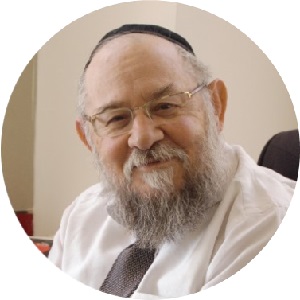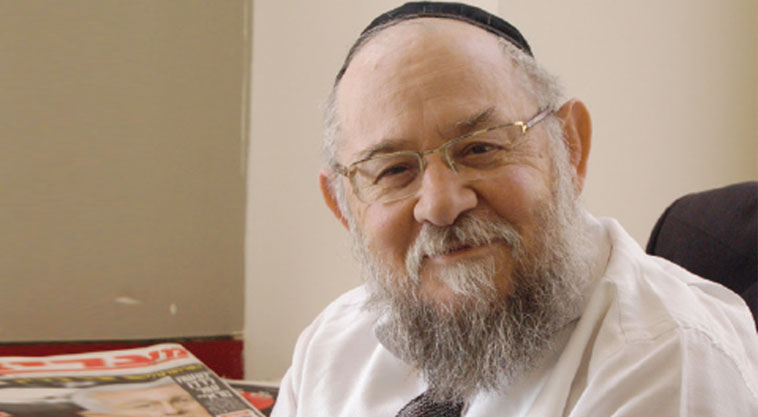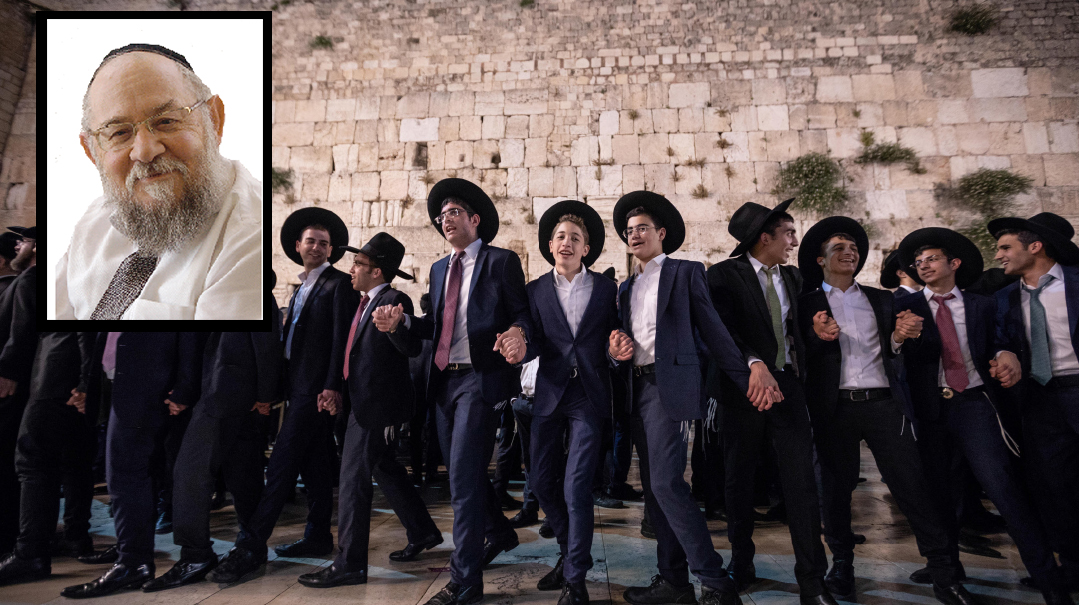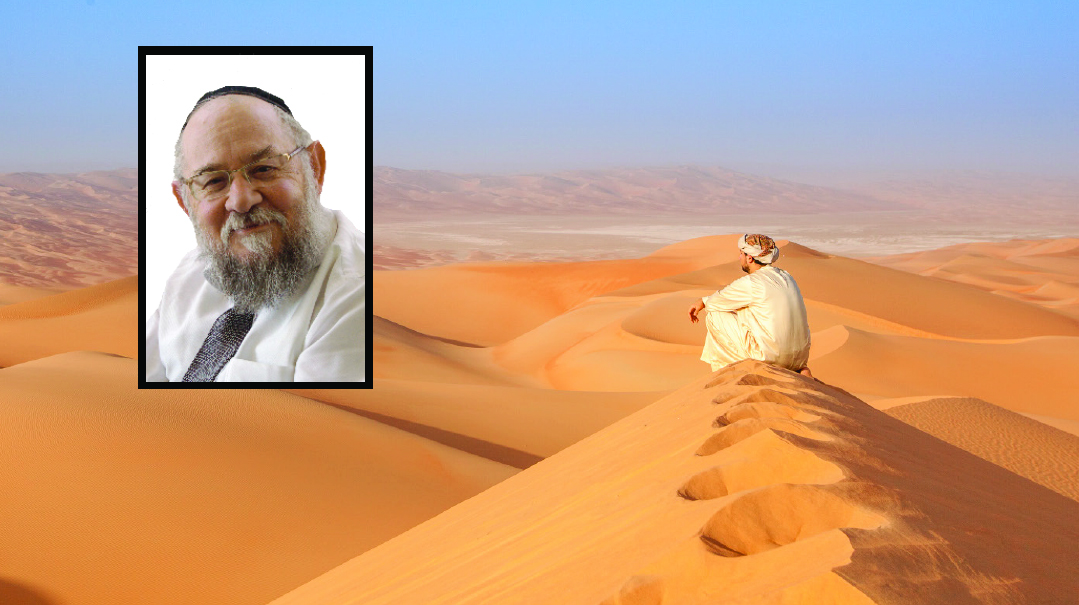Blame It on Amnesia

It’s not their fault that they want restaurants open on Tishah B’Av. For them, the Churban is ancient history. What does it have to do with their lives?
A
group of young Tel Avivians, looking to fan the flames of religious-secular tensions, has been putting stickers on storefronts, asking restaurant owners to open their establishments on Tishah B’Av. On this day, for their own spiritual fulfillment, they feel a deep need to sit in public, drinking coffee and indulging in the specialties of the house. These provocateurs know perfectly well that the city bylaws prohibit this. But that is exactly why they’ve launched their little campaign of chutzpah: Municipal elections are coming soon, and they want to get people’s backs up. What better way of doing that than to bring up some hot-button issue connected with Jewish observance?
Of course, when I read this bit of news, my initial reaction was indignation. What chutzpah, to make a public mockery of our national day of mourning over the destruction of the Beis Hamikdash and our subsequent exile. But on second thought, a calm voice of reason whispered to me that actually, for all their brazenness, these young people have a point. Really, if you consider where they’re coming from, their behavior makes sense.
A reporter asked one of the initiators of this campaign, “Why do you accept the restrictions the country enforces on Israel’s Holocaust Remembrance Day and on Yom HaZikaron for the fallen soldiers of the IDF, but refuse to abide by any legal restrictions on Tishah B’Av?” The young man’s answer was, “Tishah B’Av happened thousands of years ago. Who remembers that story? What does it have to do with me? The Holocaust happened just recently. We still know people who suffered under the Nazis. It’s close to us. But the destruction of the Temple?! Come on, give me a break!”
That young man is telling the truth as he sees it. Indeed, what does an event of ancient history, which has no bearing on his own experience, mean to him? This day of mourning, he argues, is an anachronism that no longer has any significance except from a religious perspective. And therefore I, as a secular Israeli, have the right, and even the duty, to fight against the imposition of these religiously based restrictions on our city — Tel Aviv, “the city that never stops,” the city that is divesting itself of the trappings of Judaism that have been imposed here, despite its secular character.
That is the rationale of this young secularist; how can we become indignant over his logic? Both in Israel and abroad, we’re witness to a generation of young Jews whose historical memory has been erased. Nothing from the past means anything to them.
They’re like someone stricken with amnesia due to an accident. On the surface, the person looks all right. His limbs are all intact and functioning properly; he’s alive and well, and even enjoying every minute of feeling good — but he remembers nothing of his past. He doesn’t recognize his wife and children. He doesn’t know who those two old people are, who keep insisting they’re his parents and won’t leave him alone. He might seem to be a fortunate fellow — he has no worries. He’s living in his own world and isn’t even aware that he’s lost his true identity, the entire backdrop that gives meaning to his existence. He is superficial. He’s hollow. He is living only for the moment. He has no past, and therefore no future.
This is where that young Tel Avivian with the stickers is coming from. For him, there is no reason why a Jewish restaurant should be closed on Tishah B’Av. The day has no meaning for him. His people’s past has been erased from his consciousness. If an archaeological team were to dig under his heart, they would find no sublevels of history underlying his character. It is as if he is cognitively brain damaged, spiritually disabled, and the last thing I can do is blame him for his affliction. He is a product of the education he received, which wiped his people’s past from his worldview.
THERE IS A WELL-KNOWN LEGEND that Napoleon Bonaparte, the great warrior and short-lived emperor of France, once passed by a shul on the night of Tishah B’Av and saw the Jews inside, sitting on the floor and chanting mournful verses by dim candlelight. His curiosity was piqued, and he inquired what sort of strange ritual this was. His attendants explained that the Jews were lamenting the loss of their Temple, which had been destroyed about 1,700 years earlier. To which he replied, “A People that can still remember the loss of its liberty and the destruction of its sacred Temple after so many years will yet see it rebuilt and restored.”
This non-Jewish general intuitively realized what our young anti-Tishah B’Av activists cannot grasp: that those who mourn the Churban thousands of years later aren’t mourning it as a historical memory, but as something that they, personally, have lost — something that is terribly missing from their lives right now.
In a eulogy for his wife, the gaon and tzaddik Rav Aryeh Levin asked a rhetorical question: “In the natural course of events, the deceased is eventually forgotten from the heart. True, the pain and sorrow are very great when the loss occurs. But with time, the pain gradually lessens, the gaping wound heals. Why, then, is our national tragedy never forgotten? How is it that year after year, we ache over the destruction of the Beis Hamikdash? Why hasn’t time healed our wound?”
Rav Aryeh answered, “It is true that the deceased is eventually forgotten from the heart. Indeed, it is decreed on the dead that he will be forgotten from the heart — but the Beis Hamikdash is alive! It lives in our hearts and will never die.”
What does this mean, that the Mikdash is still alive? We learn the answer to this from a pasuk in the Torah: “V’asu Li mikdash v’shachanti b’socham — They shall make Me a sanctuary and I shall dwell within them.”
Chazal ask, why does the pasuk say b’socham, in the plural? Shouldn’t it say v’shachanti b’socho, I shall dwell in it (in the sanctuary they build for Me)? But HaKadosh Baruch Hu is telling us that after the sanctuary (the Mishkan in the Wilderness and the early years in Shiloh, and later, the Beis Hamikdash in Jerusalem) is built, He will dwell within us, within the heart of every Jew. The physical structures of the Mishkan and the Temple are reminders to every Jew that the Shechinah dwells within him or her.
And therefore, as long as the structure fulfills its purpose, to remind each Jew of the Shechinah in his or her heart, it stands in all its glory. But once the Jews have abandoned Hashem and the Shechinah is exiled from their hearts, there is no need for these monuments. Their essence is already destroyed, and the physical building simply follows suit. It self-destructs. There is no place in the Jewish Nation for empty relics. If the Jews sin, as individuals and as a People, and the sanctuary is no longer serving to remind the world of the Shechinah dwelling within us, it is destroyed. And thus, every moment that the Mikdash is still not standing in its glory atop Har Habayis, we know that the Shechinah has not yet returned to take up residence in our hearts. And for this we mourn.
Our mourning is not for a building that was overrun and set aflame such and such number of years ago. Our mourning is present and immediate. We mourn today over the fact that we are still in mourning, because our hearts are still not a fit-enough dwelling place for the Shechinah to allow the Beis Hamikdash to stand once again. Who’s mourning for what happened 2,000 years ago? Our mourning is for what we see today, on Tishah B’Av in the year 2018 — the Shechinah in exile, and Its place within us still in such sad disrepair that It has not yet been able to come home. (Originally featured in Mishpacha, Issue 719)
Oops! We could not locate your form.




